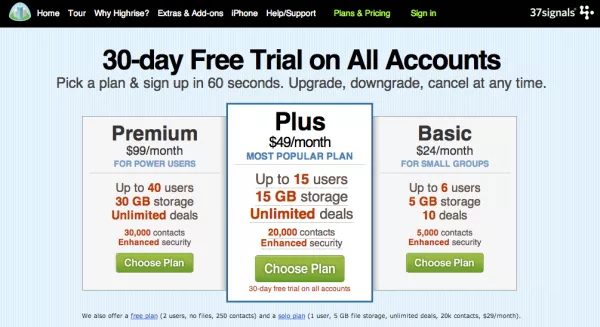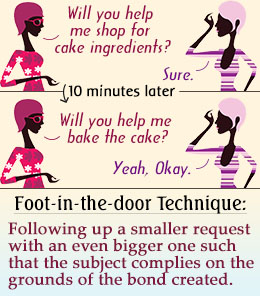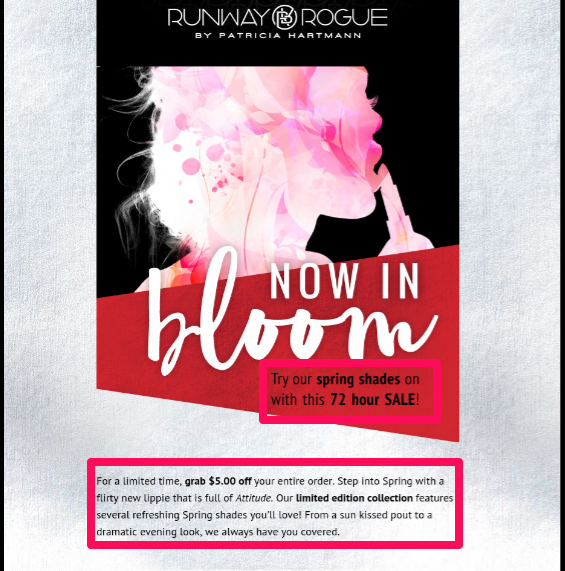These 5 Email Marketing Psychology Hacks Will Boost Your Sales

Psychology is very important in every part of our lives, but unfortunately, many of us fail to realize just how powerful it can be in email marketing.
It can mean the difference between great open rates and no open rate at all.
It can mean the difference between excited customers and customers who don’t know who you are.
It can also be the difference between fantastic, repeatable sales, and campaigns that just don’t do much of anything.
So let’s dive into my list of 5 easy ways you can use email marketing psychology to improve your sales, starting today.
[wufoo username="petovera" formhash="q6drueq14rldgc" autoresize="true" height="259" header="show" ssl="true"]
#1 Price Anchoring
People have a generally poor idea of what anything is actually worth, in dollar terms. For example, people put iPhones as being worth around $600 or more. But is that the actual value of the phone, or is it because that’s the price Apple is charging?
People usually look for cues (both monetary and emotional) to figure out how much they should pay.
Smart marketers take advantage of this by setting an anchor (or reference) price. For example, if you set the anchor price for a watch at $20, items priced at $40 would seem quite expensive.
If you made your anchor the $40 price, though, the $20 price would then seem like a steal. That’s why it’s often said that the best way to sell a $2,000 watch is to put it next to a $10,000 watch.

One study demonstrated this by asking respondents to estimate the value of a home. When provided with exaggerated prices for surrounding homes, the respondents tended to overestimate.
How to Apply It
You can use this in your email marketing in one of two ways. The first and most popular is to show the ‘new price’ compared to the old price. For example:

The second is to make sure the first product shown in your newsletters is the big-ticket item (the $10,000 watch). After that, show off the products you’re really trying to sell (the $2,000 watches).
It’s worth noting, Matt talked further about price anchoring in a recent [thrive_2step id='19054']Matt Hacks[/thrive_2step] video.
#2 Reciprocity
Reciprocity is the act of exchanging goods or services for mutual benefit. Or, to put it another way: if you do someone a favor, they'll feel obligated to do something for you in return.
Philip Kunz conducted one of the most revealing psychological studies on reciprocity. He sent 600 Christmas cards to people he didn’t know at all and surprisingly, 35% of those people sent him a card back.

This is something you can use easily to grow stronger relationships and more sales from your email list...
How to Apply It
You can give a “gift” to subscribers, and they will be more likely to “pay it back” by buying products from you.
There are a lot of things you can give away for free. You can give an actual gift (along with a product the customer purchased), a discount, or free shipping.
You can also offer a lead magnet (ebook, video course, or similar). They’ll then be more likely to take a desired action on your next email campaign.
#3 Small Requests Before Big Ones (Foot-in-the-door technique)
The foot-in-the-door technique works by getting people to agree to a smaller request. Once they complete these, they’ll be more likely to agree to the bigger requests.

This technique was demonstrated in 1966 by Freedman and Fraser. As part of their study, they called California housewives and asked to talk about the household products they used.
After 3 days, they called again and asked if a group of men could visit their homes and inspect their cupboards for about 2 hours.
The women who talked to them the first time were 2 times more likely to agree to the home visit.
How to Apply It
You can use this process throughout your email marketing strategy.
First, get your email subscribers to complete a small action, like watching a video or signing up for your newsletter.
Then, increase the size and potential value of the actions, including repeat purchases.
#4 Scarcity & FOMO
Scarcity is the idea that there is a limited supply of something.
FOMO, or Fear of Missing Out, is an important psychological aspect you can use in your email marketing campaigns buying decisions, or a decision to engage with your content.
FOMO describes the social fear or general anxiety that comes with the idea of missing out on an experience, event, or investment.
For example, say someone on Facebook sees that all their friends are going to a party. They’ll want to go to the same party (even if they weren't planning on going before).
The same principle leads younger generations to use Snapchat. They’re afraid to miss out on something fun or interesting by not being a user of the service.
Worchel, Lee and Adewole showed that scarcity/FOMO has a real effect on people. They showed two groups of students the same 10 cookies in two jars and asked them to rate the cookies’ value.
Initially, both jars were full and had similar value scores, but then one jar had 8 cookies removed. When asked which jar they preferred, most of the students chose the jar with only 2 cookies remaining.
How to Apply It
How can you use this in your email marketing campaigns? Show how popular your products are--and communicate that there is a limited supply.
Below is an example of how one of Ominsend's customers used this in an email marketing campaign.

#5 Free
No matter what, there’s magic and power in the word ‘free.’
It is human instinct to take the path of least resistance - and that includes financial commitments.
Many marketers mistakenly believe that the word ‘free’ in your subject line will automatically get you sent to the Spam folder. Yet, many studies have shown that there doesn’t seem to be a difference in email deliverability.
One famous example from Dan Ariely’s Predictably Irrational shows how impactful it can be. He talks about Amazon expanding their free shipping offer in France.
At first, they offered a nominal price of 1 franc (about $0.20) and noticed stale sales.
Then they made all shipping free, and saw huge increases in sales, with only a 20-cent price difference.

How to Apply It
In your email marketing, make sure to use the word FREE regularly. It can be in your subject line or right at the top of your email, as well as in the signup forms you use to get email addresses in the first place.
With these tips, you can make sure your email marketing campaigns are a success.
A little psychology and a good marketing strategy will boost your open and click-through rates and increase your sales.
Do you use any of these strategies in your own email marketing?
Want more sales? Download Growbo’s [thrive_2step id='18964']11-Point Perfect Sales Funnel Checklist[/thrive_2step]
Bernard Meyer is the Content Marketing Manager at Omnisend, the ecommerce marketing automation platform made for smarter marketers. He’s passionate about researching amazing marketing techniques to help ecommerce businesses succeed.













